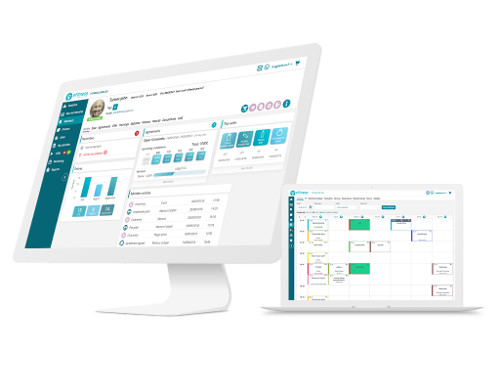“2020 is going to be the year. I’m going to read more, get into shape, learn to play the guitar, avoid chocolate, quit smoking, pay off debts, travel the world and become an amnesty international volunteer.”
Yes, we’ve all heard it. Year on year, people love to make New Years Resolutions, especially Health Club members, but the brutal truth is, every year, most people fail to complete them.
Let’s make it perfectly clear, ‘fitness’, more than anything else, takes centre stage every year among those who beat the ‘new year, new me’ drum.
Research conducted from YouGov in 2019, showed that the three most commonly cited New Years Resolutions for Brits were, in fact, all concerned with health and fitness.
‘More exercise and improving fitness’ topped the table as the most shared pledge with 47% of the 2,020 respondents drawing reference to this. This was closely followed by resolutions pertaining to ‘losing weight’ (44%) and ‘improving diet’ (41%).
Gym membership figures across early January, year on year, prove that people do act on their words. However, unfortunately, in the following month, attendance statistics reveal that the ‘gym motivation’ shared among such joiners is only shortlived.
But why is this and what can Health Club Operators do to change this? In this post, I will share 5 tips that might just give you some food for thought.
1. Build a New January Member Welcome Program
Research has revealed that 4/5ths of January gym joiners leave within five months of joining.
If your Health Club operates using a month by month billing model, it means you’ll likely lose out on a huge chunk of revenue from June to December.
If your Club offers member longer contractual agreements, it means you’ll have a lot of ‘sleeping members’ who will likely quit the following year as soon as their contract is up.
Neither are ideal situations to be in, especially when you take into account that it costs five times more to acquire a new member than it does to retain a current member.
But all is not lost. You can fight the drop off in members by ensuring your ‘on-boarding strategy’ is optimised. A 2018 report conducted by IHRSA showed that just two interactions between staff and members each month lead to increases in attendance for the following month.
So, consider building a tailored new member welcome program aimed at your January joiners to make the start of their member journey as smooth as possible. A program that acknowledges the time of the year they are making the change, a program that encourages them to persevere when they are most likely to drop off, a program that encourages members to still show up as the temperature gets colder and the nights get shorter. The program should outline all the communications and offers any January joiner will receive both online and offline.
Ideally, all your members who joined throughout other parts of the year should have already received their on-boarding communications, too. As I’ll cover later on, you don’t want to show overt favouritism towards the January joiners, but the idea is you create more relevant, specific content to this large audience that is worth making the effort for.
2. Optimise your Group Fitness product.
Alongside formulating a bespoke onboarding strategy, you should also make sure you introduce your new members to your Group Exercise or Small Group PT offering as early as possible, as this increases the chances of them staying with you for longer.
When people train on their own, typically what happens is they either hit a plateau and cannot find the motivation to continue so they get bored and give up, OR, they try too hard at first and the increased difficulty causes them to drop out. With Group Exercise and Small Group PT, an instructor is there to tailor the workouts according to your ability and will do their best to ensure you are appropriately challenged.
Another key finding of IHRSA’s 2018 study was that class attendees are 56% less likely to cancel their membership compared to those who train alone.
From a psychological perspective, it’s plainly obvious that the social element of Group Exercise, combined with the extra motivation provided by the Group Instructor and the added accountability members put on themselves to show up to classes, are the main reasons why someone who attends classes is more likely to stick to a resolution for longer.
How you optimise your Group Fitness product depends on your business but I would focus on making sure there is enough variety and that your product is fit for all levels, especially beginners. Perhaps a class called ‘Stick HIIT OUT’ would do the trick.
3. Make monthly membership affordable
January is the time of the year where Health Club Operators tend to bolster their promotional activity and maximise their advertising spend. This is no real surprise when you consider that 12% of all sign-ups happen at this time of year; proportionally more than any other time period.
But, you need to be ultra-careful with your pricing strategy and the value of your business. Offering free trials and extra services can incentivise some, but it can also devalue your business too if you’re seen to be doing at the same time of the year.
However, I would also advise you not to do the opposite and increase your monthly prices because you know the demand is there in January. While it might seem like a good idea to boost future revenue, it ought to be understood that a member who stops attending in April, is likely going to leave in May. One thing that may keep such members with you is the affordability of their monthly subscription. Contrary to popular belief, an expensive price, generally, does not motivate someone to keep attending. However, offering a lower price can prevent someone from quitting.
Overall, I would always advise that you market your gym on its benefits, features and unique selling points rather than price. If you do wish to run an offer, combining your membership product with your Group Fitness product to me would be a sensible approach, given the previous points made above.
4. Don’t forget about your current members
January can be a tough time for your loyal members. Those who were giving you 10/10 scores on your NPS last year and featured on your Instagram pages for their remarkable success may suddenly find themselves queueing for a cross-trainer and on a waiting list for a class.
Those who were new years resolutioners last year, and DID stick it out may feel a little like Woody in Toy Story when Andy unveiled the opening of his new Buzz Lightyear toy.
It’s not an easy place for your existing members. My recent article on ‘The Change Curve’ will help you understand what they are going through. You’ll see it first hand on facebook and twitter when those who were singing your praises just a month ago are now complaining about the gym being too busy.
As a gym-owner, you need to tackle this in two ways. Firstly, you must show your existing clients that they are still the heart and soul of your business. I mentioned in point 1 about running a New Member Welcome Program to January Joiners, I would personally match this with an Existing Member Welcome Program to others which serves to reward loyalty and offer reassurance.
That’s not all though, you must explore means to integrate your new members with your current ones. Classes and Small Group Training are awesome ways to break down barriers, especially partner workouts which pair up newbies with the seasoned pro’s yet still offer differentiation with accordance to fitness levels.
Ensure your Social Media Team are on top of their game – while groups and pages can bring people together in creating a sense of community spirit, they can also have the adverse effect if they are not managed and monitored in the right way.
You may also wish to consider recruiting more Personal Trainers to cope with the influx of new members, ideally, this should mean you can offer more Gym Floor based classes and help to ease the flow on the gym floor.
5. Run a fitness challenge at key points
Is it possible to determine the exact point at when the wheel starts falling off for the January Joiners?
Well, Citylab and Foursquare did collaborate and defined the precise moment to be when an uplift in fast food consumption meets the decline in gym visits. They determined February 9th to be the date where for many, it all goes pear-shaped, or should I say ‘Big Mac and Fries’ shaped?
Based on the Machine Learning data from our very own software at eFitness, we can see that generally, it seems people are eager to get the ball rolling as gym attendance begins for many as early as 2nd January.
We can then see that throughout January, the average operators can expect to see a 10% uplift in weekly attendance during the first two weeks of the year, the figure then gradually declines to just +5% in the last two weeks of the month. The percentage then remains steady until Mid-March, but it’s at that point when the ‘attendance’ figure falls from grace and leaves the Operator scratching their heads.
Interestingly, mid-March is also the period when membership sales start to slow down. It seems that at this crucial point in the year, many have fallen off the wagon, and there isn’t a great queue of people waiting on the roadside to climb aboard either.
With that in mind, it may be worth focusing on Member Engagement right from the second week of the year onwards and then again in mid-March. You should consider running Fitness Challenges, free events, workshops, nutrition seminars and anything you can to keep people interested.
To summarise
It can be very tough for members to commit to a gym membership at any time of the year, let alone the coldest month of the year. While motivation starts off strong, if habits are not formed, the feelings of ‘I can do this’ soon waiver rapidly. It takes a lot of effort from both the member and the Operator to keep everyone happy in January and inevitably, some members will cancel their subscriptions. However, by taking care of your new January joiners through a carefully thought out Welcome program, by maximising your Group Training Offering, by being affordable, by creating a community between your current members and your existing ones, and by running fun and engaging fitness challenges, you’ll at least be doing more than most to show you care!


